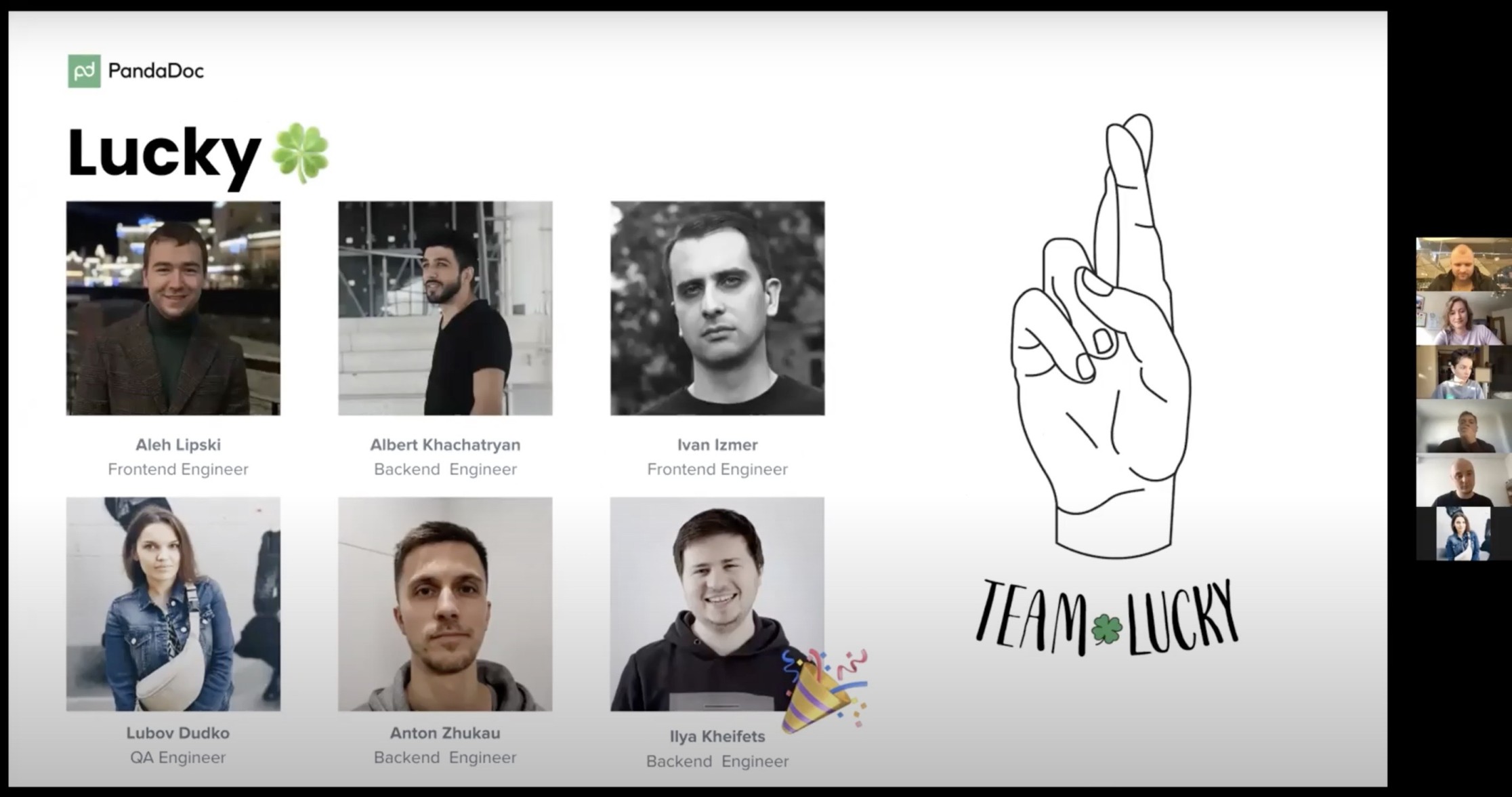
How to run a successful multi-team sprint review
A sprint review is an ideal way to show all the hard work and accomplishments of a team at the end of a sprint. Based around transparency, it shows work that’s completed or unfinished, plus projects that have been added and removed from the sprint. One of the most valuable parts of this informal meeting is feedback from participants, as it’s often better understood verbally.
The sprint review concept seems to suit a single team well, as it’s easy to retain focus and stick to an agenda. However, challenges arise when a sprint review includes multiple teams.
When we were doing single-team sprint reviews at PandaDoc, we faced meetings that could extend beyond two hours, with little opportunity for feedback and actual product demos. Loss of focus was also an issue, as many people tend to lose concentration after eight seconds — even less time than a goldfish!
It was clearly the right moment to make changes and find a more efficient way of reviewing our teams’ work. So how did we manage to do it with nearly 20 teams?

Finding the right approach
Our very first step was to roughly outline our new meeting format with all our needs and wishes. We decided early on we wanted to make it:
- Easy to offer feedback
- Highly interactive
- Scalable for at least 30 teams
- Valuable for a wide audience
As a result, our team decided to turn to Open Space Technology (OST), an effective method that allows participants to create and manage agendas and issues themselves, and also come up with solutions.
How does the Open Space Technology approach work?
Here are the core principles that help make OST efficient:
Whenever the meeting starts is the right time. In reality, creative moments seem to happen on their own time, making clocks relatively unimportant.
When it's over, it's over. Just because a meeting was scheduled to last two hours doesn’t mean it needs to extend that long once everything’s been discussed.
Whatever happens is all that could have happened. It will never be the same space and people, so let go of your expectations and live in the moment.
Whoever shows up is the right group of people. Even if certain individuals with expertise are missing, others may get involved — which could lead to exciting results from working together.

Along with these guidelines, our team relied on ideas from Scrum Ukraine‘s 2019 Agile Coaching Camp:
- Create a large space for an agenda with a matrix containing time slots and rooms
- Let participants suggest topics for discussion
- Let facilitators open the event — and let participants choose where they’d like to go
The important "law of two feet" is also worth noting. This simply means that participants have the right to move on to another session, or take a break if they feel like they aren’t learning from or contributing to a meeting.


How has PandaDoc adopted the Open Space Technology approach?
We use Miro for agenda-planning. Within Miro, teams can add presentation topics to available time slots. It’s usually a 3x5 matrix that can be expanded to 5x5.
The day before our biweekly sprint review, the team shares the agenda and sends invitations. This makes the process transparent and lets participants learn about topics for discussion.
Sprint reviews take place in Zoom, with each meeting lasting up to 85 minutes and structured around three main segments: pitch, demo, finalization.
- Pitch: 20–30 minutes

At this stage, participants invite others to their demo session, during which they show their work. This is a type of warm-up that gives all participants a clear understanding of:
- A roadmap with deliverables and plans
- An actual state of product delivery
- The team’s direction
After this, the scrum master (acting as facilitator) shares the final agenda and briefly explains the guidelines of OST — which is especially important if new team members are present. The scrum master also mentions how to select and move between rooms during the meeting.
- Demos: 50–60 minutes
During this stage, the team shares achievements, challenges, and solutions while they show their completed work. To stay on track, each room is supported by a moderator (usually a scrum master) who keeps an eye on the time, records the demo, and asks questions to encourage discussion. Recordings allow anyone who’s missed the meeting to watch it on their own time.

There are usually five rooms: three for demos (according to the schedule), and two more called “water cooler” and “smoking room,” where participants can discuss certain topics and features.
- Finalization: 5 minutes
Each demo segment ends with five minutes for feedback, comments, and appreciation from the participants. Feedback is an important part of this stage; any new ideas should be added to the backlog.

Is unfinished work worth a demo?
The answer is an emphatic yes! A work in progress absolutely deserves a demo and has lots of value. Sharing a demo of unfinished work can help:
- Show a team’s progress
- Add transparency to the process
- Maintain a sense of control
- Elicit potentially crucial feedback from participants
- Align expectations on delivery with stakeholders
Some helpful guidelines on presenting unfinished work:
- Let participants know you’re showing work that’s in progress
- Explain problems you and your team are encountering
- Share your next steps
- Reveal potential risks that may change delivery plans
- Ask for suggestions


How has the Open Space Technology approach worked for PandaDoc?
Our shift toward OST has been very successful! It’s helped us:
- Save valuable time
- Allow for flexibility in the number and type of participants
- Unleash creativity and encourage discussion
- Build a better sense of community
And it’s worth noting that a majority of our sprint review participants have indicated the OST approach is convenient and effective.
We’ve also identified these areas for improvement:
- Gathering high-quality feedback on a regular basis
- Showing current achievements in relation to past and future plans as a way to track performance
- Along with actual delivery, having product demos include design review and user-research results, which will attract more meeting participants
We hope you find all this helpful as you apply it to your own team’s approach to sprint review meetings!
.png)
What are PandaDoc Offsites, and what is their purpose?
If you had a chance to check out the first issue of Bam-Boo magazine, you already know that PandaDoc is a remote-first company. All Pandas are free to choose where to work and, most of the time, how to plan their work day.

How PandaDoc Pivoted Its Business Model in 24 Hours
Businesses are constantly adapting to internal and external events to remain competitive and deliver what their customers need. This is a normal and constant process, and it usually happens gradually over a long period of time with pricing changes, new product launches, market repositionings, and expansion. But once in a while, an extraordinary event like COVID-19 makes a business jam-pack major changes into a very tight schedule. That's what this story is about.
-min.png)
Building Agility on Scale
At the fast-growing stage, any company starts facing the problem of scaling. In this article, we’d like to share how we manage scaling while staying adaptive to the market changes and suggest experiments to implement in your company (check the “try/avoid” sections).
